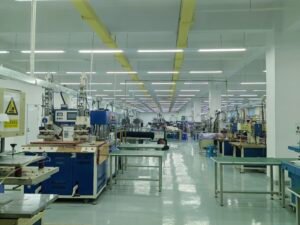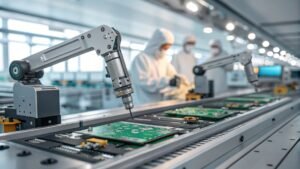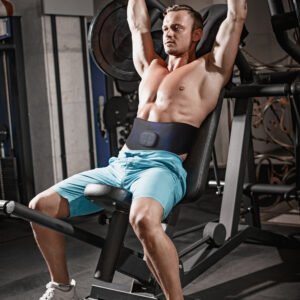As the global population ages, the demand for innovative and effective elderly care solutions is rapidly growing. One of the most promising advancements in this field is the integration of Electrical Muscle Stimulation (EMS) and Red Light Therapy (RLT). Together, these two therapies offer a non-invasive, efficient, and safe way to enhance the health and well-being of older adults, addressing issues like chronic pain, muscle weakness, and overall mobility.
Understanding the Challenges in Elderly Care
Aging brings numerous physical challenges, including reduced muscle strength, joint pain, and slower recovery from injuries. Many elderly individuals suffer from chronic conditions such as arthritis, back pain, or reduced mobility. Traditional treatments like medication often lead to side effects, making non-invasive solutions like EMS and RLT highly appealing.
EMS helps stimulate muscle activity through electrical impulses, improving muscle strength, reducing stiffness, and enhancing circulation without the need for intense physical exercise. RLT, on the other hand, uses red light wavelengths to penetrate deep into tissues, promoting cell regeneration, reducing inflammation, and speeding up healing processes.
The Benefits of EMS for the Elderly
Improved Muscle Strength:
EMS devices help older adults engage their muscles without strenuous activity. Regular EMS sessions can prevent muscle atrophy, improve balance, and reduce the risk of falls.
Enhanced Blood Circulation:
The electrical pulses from EMS stimulate circulation, which can aid in the delivery of nutrients to tissues and reduce swelling in the legs and feet, a common issue for the elderly.
Pain Relief:
By engaging the muscles and blocking pain signals, EMS can offer relief from chronic conditions such as arthritis, back pain, and other musculoskeletal issues.
How Red Light Therapy Complements EMS
While EMS focuses on muscle stimulation, RLT provides cellular-level healing that enhances the overall effectiveness of treatment. Here’s how RLT adds value to elderly care:
Promotes Healing and Recovery:
RLT accelerates tissue repair, making it ideal for treating wounds, joint inflammation, and other injuries that the elderly are prone to.
Anti-Inflammatory Benefits:
By reducing inflammation, RLT can help alleviate conditions like arthritis and joint pain, offering a complementary benefit to the muscle-strengthening effects of EMS.
Non-Invasive Skin and Tissue Care:
RLT also helps improve skin elasticity and reduce the appearance of wrinkles, making it an attractive option for those interested in the cosmetic benefits of light therapy.
Combined EMS and RLT Devices: A New Frontier in Elderly Care
As both technologies continue to advance, we are seeing the emergence of devices that combine the benefits of EMS and RLT in one system. These multi-functional devices are particularly valuable in elderly care settings, offering a holistic approach to health management. By using EMS to strengthen muscles and RLT to promote healing, these devices provide a complete solution for improving mobility, managing pain, and enhancing the quality of life for older adults.
Applications in Elderly Care
Chronic Pain Management:
Older adults often deal with persistent pain in their joints and muscles. Combined EMS and RLT devices can provide non-drug-based relief, reducing dependency on medications.
Post-Injury Recovery:
The elderly often take longer to recover from injuries. EMS helps maintain muscle tone, while RLT accelerates tissue repair, making the recovery process faster and less painful.
General Mobility Improvement:
Regular use of EMS and RLT can help older adults maintain flexibility and range of motion, improving their ability to perform daily activities independently.
Why Care Facilities Should Adopt EMS and RLT Technologies
Care facilities and home health services can benefit greatly from adopting EMS and RLT technologies into their treatment protocols. These non-invasive therapies are easy to administer, require minimal training, and can be customized to meet the specific needs of each individual. Furthermore, the integration of these technologies offers a modern, effective alternative to traditional pain management and rehabilitation methods.
With the increasing demand for comprehensive elderly care solutions, EMS and RLT represent the future of non-invasive, holistic treatment. This technology not only empowers the elderly to lead more active and independent lives but also offers care facilities a competitive edge in providing innovative health solutions.
Conclusion
The combination of EMS and Red Light Therapy is revolutionizing elderly care. By addressing muscle weakness, chronic pain, and injury recovery, these therapies offer a complete, non-invasive approach to improving the health and quality of life of older adults. As care providers and families look for safer, more effective ways to support aging populations, EMS and RLT devices will continue to gain traction as the go-to solution for elderly health management.





